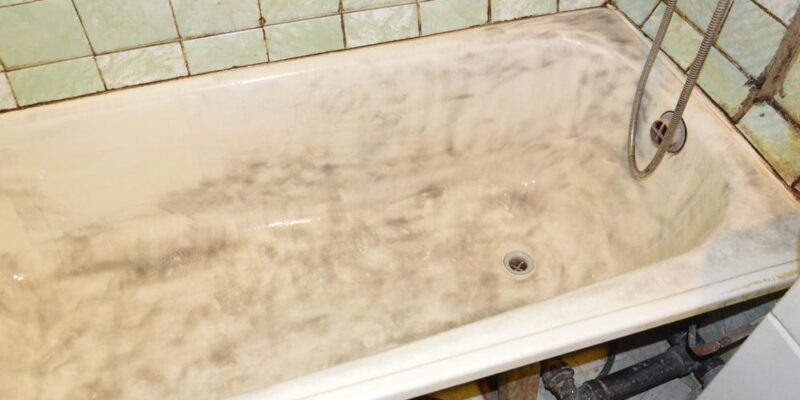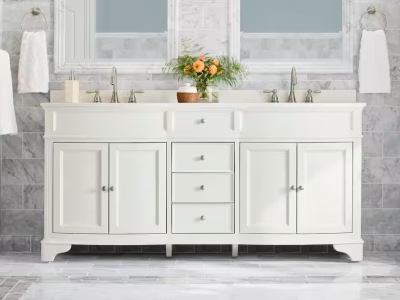Bathtub refinishing, also known as bathtub re-glazing or resurfacing, is a process that involves refreshing and restoring the surface of a worn, damaged, or outdated bathtub to make it look like new. This procedure can be applied to various types of bathtubs, including porcelain, fiberglass, and acrylic. The primary goal of bathtub refinishing is to repair any chips, cracks, or stains and to apply a new, durable finish that will enhance the appearance and longevity of the bathtub.
What is Bathtub Refinishing?
Bathtub refinishing, also known as re-glazing or resurfacing, is the process of applying a new coating to the surface of an old bathtub. This can hide cracks, chips, and stains, making the bathtub look brand new. It’s a cost-effective alternative to replacing the entire bathtub.
Why Choose Bathtub Refinishing?
- Cost-Effective: Refinishing is much cheaper than replacing the entire bathtub.
- Quick Process: The process can be completed in a few hours, unlike a full replacement which can take days.
- Less Mess: No need to rip out the old tub, so there’s less mess and disruption.
- Eco-Friendly: By refinishing, you reduce waste since you’re not throwing away the old tub.
Steps to Refinish a Bathtub
1. Gather Your Supplies
To start, you’ll need a few key supplies:
- Safety gear (gloves, mask, and goggles)
- Sandpaper
- Cleaner (to remove soap scum and dirt)
- Epoxy or bonding agent
- Refinishing kit (includes primer, paint, and topcoat)
- Paint sprayer or brush
2. Clean the Bathtub
Clean the bathtub thoroughly to remove any soap scum, dirt, or grease. Use a strong cleaner and a scrub brush to ensure the surface is spotless. Rinse well and let it dry completely.
3. Sand the Surface
Use sandpaper to roughen the surface of the bathtub. This helps the new coating adhere better. Focus on areas with chips or cracks to ensure a smooth finish.
4. Apply the Bonding Agent
A bonding agent or primer is essential for ensuring that the new coating sticks to the old surface. Apply it evenly and let it dry as per the instructions on the refinishing kit.
5. Mix and Apply the Epoxy
Mix the epoxy or paint as instructed in the refinishing kit. Use a paint sprayer for an even coat, or a brush if you prefer. Apply the first coat and let it dry completely. Apply a second coat if necessary.
6. Add the Topcoat
Once the epoxy is dry, apply the topcoat. This adds shine and protects the new surface. Follow the instructions carefully for the best results.
7. Let It Cure
Allow the bathtub to cure for at least 24 hours before using it. This ensures the new surface is fully hardened and will last longer.
Bathtub Refinishing Cost
The cost of refinishing a bathtub varies based on several factors such as the type of tub, its size, the material it’s made from, and whether you hire a professional or undertake a DIY project.
Professional Refinishing:
- Average Cost Range: $270 – $625
- Low-End Cost: $200
- High-End Cost: $1,300
- Typical Average Cost: $465
Pros: Higher quality finish, faster process, and less hassle for you.
Cons: More expensive than DIY.
Factors that influence the cost include the condition of the tub, the refinishing method used, and local labor rates. Refinishing is suitable for most bathtub materials, including cast iron, porcelain, fiberglass, and acrylic.
DIY Kits:
- Cost Range: $50 – $100
Pros: Cheaper, can be done at your own pace, and no need to wait for a contractor.
Cons: Requires time, effort, and some skill. The finish might not be as smooth as a professional job.
While DIY kits are more affordable, they require significant effort and skill to achieve a professional finish. Proper cleaning and preparation are crucial to ensure the coating adheres well and lasts without peeling or chipping.
How Long Does Bathtub Refinishing Last?
Bathtub refinishing is a cost-effective way to extend the life of your bathtub and keep it looking new. With proper care and maintenance, a refinished bathtub can last up to 15 years. By choosing a reputable professional and following the recommended care tips, you can enjoy a beautiful, durable bathtub for many years to come.
Maintenance Tips
Regular Cleaning
- Clean your bathtub regularly using mild, non-abrasive cleaners. Avoid harsh chemicals and abrasive pads that can scratch or wear down the surface.
Avoid Heavy Impacts
- Be careful not to drop heavy objects on the bathtub surface, as this can cause chips or cracks in the refinished coating.
Fix Leaks Promptly
- Ensure that any leaks from faucets or plumbing are fixed promptly to prevent water damage to the refinished surface.
Use a Bath Mat
- Place a bath mat at the bottom of the tub to reduce the risk of scratches and to provide additional protection to the refinished surface.
Ventilate the Bathroom
- Proper ventilation can help prevent mold and mildew growth, which can damage the refinished surface over time. Use a fan or open a window to keep the area well-ventilated.
When to Consider Replacement
While bathtub refinishing can be a great solution for many issues, there are times when replacing your bathtub might be a better option. Here are some situations when you should consider replacing your bathtub instead of refinishing it:
1. Severe Structural Damage
If your bathtub has severe structural damage such as deep cracks, large chips, or holes, refinishing might not be sufficient. These kinds of damage can compromise the integrity of the tub, making it unsafe to use. In such cases, replacement is the better option.
2. Extensive Rust
Rust can weaken the bathtub material and spread over time. If your bathtub has extensive rust that can’t be removed with standard cleaning methods, it’s better to replace it. Refinishing can cover up minor rust spots, but it won’t stop the rust from continuing to damage the tub underneath the new finish.
3. Outdated Style or Design
If you’re remodeling your bathroom and want a completely new look, replacing the bathtub might be the best choice. An old-fashioned or out-of-date bathtub might not fit the new design and style you’re aiming for. A new bathtub can match your vision and improve the overall aesthetic of your bathroom.
4. Incompatibility with New Fixtures
Sometimes, the existing bathtub might not be compatible with new fixtures or fittings you want to install. This can include things like new faucets, shower heads, or surrounding tile designs. If the bathtub is not compatible with these updates, replacing it can ensure everything fits and works well together.
5. Frequent Need for Repairs
If your bathtub frequently needs repairs and maintenance, it might be more cost-effective in the long run to replace it. Continuous repairs can add up and might eventually cost more than a new bathtub. A new tub will be more reliable and require less maintenance.
6. Desire for Modern Features
New bathtubs often come with modern features such as built-in jets, ergonomic designs, or slip-resistant surfaces. If you want to upgrade to these new features for added comfort and safety, replacing your old bathtub is the way to go.
7. Health and Safety Concerns
If your old bathtub has issues that could pose health or safety risks, such as mold growth or lead-based materials, replacing it is the safest option. Refinishing will not solve these underlying issues, and your health should always come first.
When to Call a Professional
Hiring a professional ensures a smooth and durable result. Professionals have the expertise to manage various materials and conditions, guaranteeing a finish that looks and feels brand new. For a hassle-free experience and a high-quality outcome, consider calling a professional refinishing service. For more information on bathtub refinishing and services, visit The Surface Doctors.













Comments